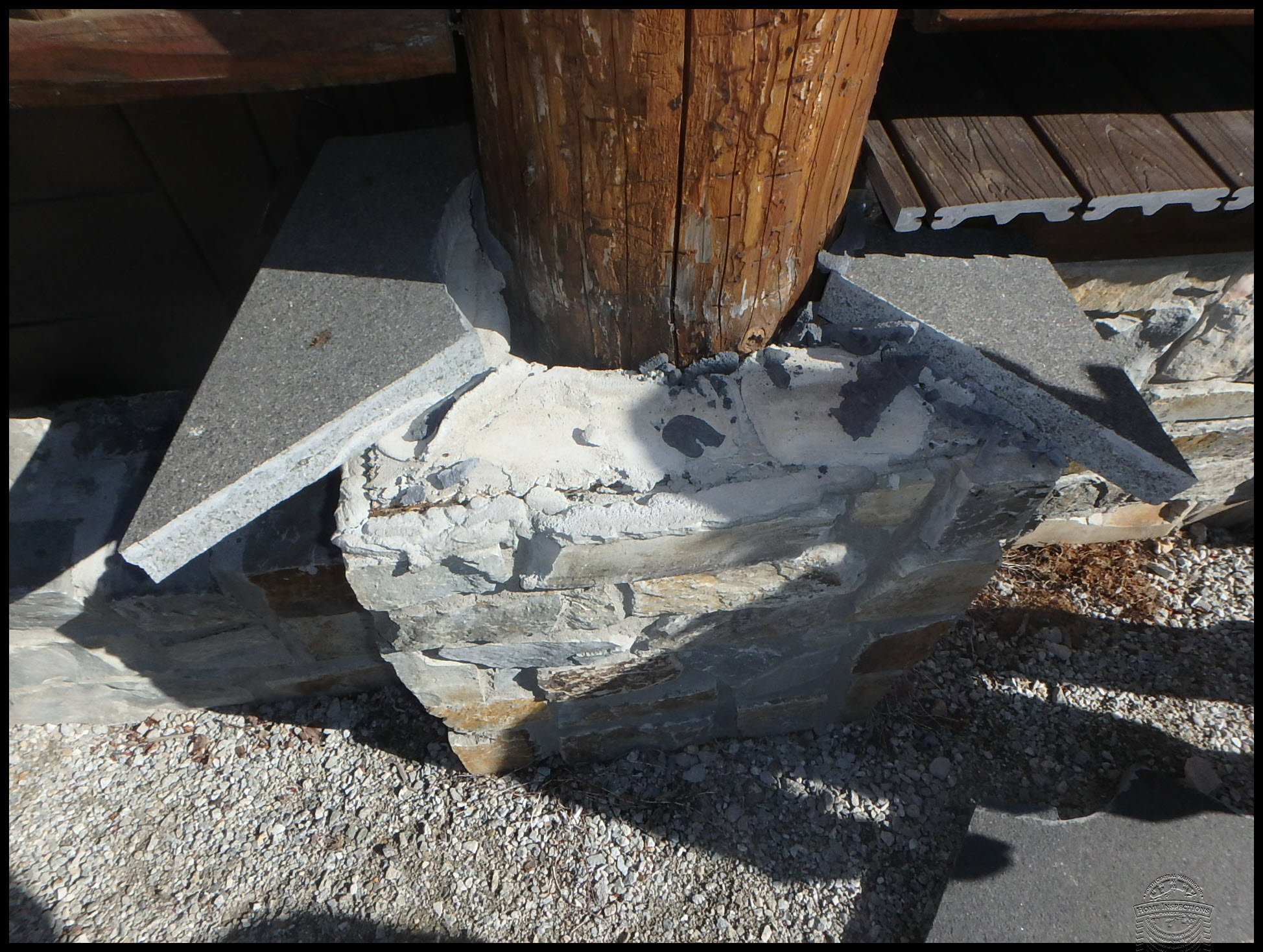Adhered Natural Stone Veneer Installation Gone Bad


Stone veneer is a beautiful product but improper installation can lead to costly repairs and in this case replacement.
Below is a brief and installation document on how to have this properly done to save you money in the log run.

Briefing Document: Adhered Natural Stone Veneer Installation
Source: Excerpts from “NF-Adhered-Natural-Stone-Installation-Guide.pdf” published by the Rocky Mountain Masonry Institute (RMMI), 2010.
Main Themes:
- Best Practices for Adhered Natural Stone Veneer Installation: The document serves as a comprehensive guide covering crucial aspects of installing adhered natural stone veneer, particularly focusing on exterior applications in demanding climates like Colorado.
- Material Selection and Compatibility: It emphasizes choosing suitable natural stone types, mortars, and backing systems for long-lasting performance, highlighting the importance of material compatibility to prevent issues like cracking and moisture damage.
- Code Compliance and Structural Considerations: The guide stresses adhering to building codes like the International Building Code (IBC) and referencing standards from organizations like the Masonry Standards Joint Committee (MSJC) for safe and compliant installations. It underscores the need for a structurally sound backup system capable of handling the weight and stiffness of the stone veneer.
Most Important Ideas/Facts:
- Backup Surface Preparation:
- Concrete/CMU/Stucco: Ensure the surface is clean, untreated, and free from form-release agents.
- Stud Walls: Cover studs with sheathing, building paper, and metal lath. Apply a 3/8″-1/2″ scratch coat of mortar to the lath, ensuring it cures for at least 24 hours before stone placement.
- Mortar Application and Stone Placement:
- Dampen the wall surface before applying mortar.
- Apply a 3/8″ to 3/4″ thick mortar bed, working in manageable sections (around 10 sq. ft.).
- Back-butter stones with mortar, ensuring complete coverage and a slight excess at the edges.
- Maintain consistent joint widths (ideally less than 1/2″) to minimize shrinkage cracks.
- Workmanship:
- Complete Mortar Bedding: Avoid voids behind stones, as they can trap water and lead to failure.
- Well-Tooled Joints: Ensure full and properly tooled mortar joints without voids or cracks.
- Uniform Joint Width: Maintain consistency for aesthetics and to prevent cracking.
- Balanced Bond Pattern: Create a visually appealing pattern, avoiding overly large or small stones.
- Special Considerations:
- Deflection Limits: Limit deflection in wood or steel stud walls to prevent cracking (recommendations range from L/360 to L/1000).
- Wall Caps: Pay close attention to flashing and drainage at wall caps to prevent water penetration.
- Oversized Window Sills: Support sills exceeding 2-5/8″ in depth with steel angles.
- Water Repellents: Consider applying breathable water repellents to areas prone to constant wetting.
- Movement Joints: Incorporate movement joints to accommodate building movement and prevent cracking.
Quotes:
- “Most natural stone is inherently durable, but there are many types and varieties of natural stone and not all are suggested for exterior use.”
- “Complete mortar bedding at the back of the stone is essential. Even small voids can collect water over time, leading to premature failure.”
- “Mortar joints need to be full and well-tooled, without voids or cracks that may let water into the wall.”
- “Th e bond pattern should be ‘comfortable’ – avoid the use of occasional large or very small stones or thin vertical stone pieces.”
- “With adhered applications, the stone veneer will move with the backup wall as the structure responds to loads, temperature variations, and soil settlement.”
Conclusion:
This guide provides essential information for successful adhered natural stone veneer installations. Adhering to its recommendations ensures a durable, aesthetically pleasing, and code-compliant finished product. Consulting with a structural engineer is crucial when dealing with complex designs or challenging site conditions.
Adhered Natural Stone Installation Guide – published by the Rocky Mountain Masonry Institute (RMMI).
Fun little AI Pod on Stone Veneers

If you find any errors or have additional information that would expand on any code, building standards or manufacturer requirements please let me know.
NCW Home Inspections, LLC is a Licensed Washington State Home Inspection service located in Wenatchee Washington serving Chelan County, Douglas County, Kittitas County, Okanogan County and Grant County Washington and the cities of Wenatchee, Leavenworth, Cashmere, Oroville, Cle Elum, East Wenatchee, Quincy and many more…
Your Wenatchee and Chelan Professional Real Estate, Home and Structural Pest Inspection Service
Coordinator & Instructor- Fundamentals of Home Inspection- Bellingham Technical College
Former WA Home Inspector Advisory Licensing Board
www.ncwhomeinspections.com 509-670-9572
You can follow me on Facebook, Twitter, Google+ and on my website Blog.
(Click on Icons to go to social media pages.)




